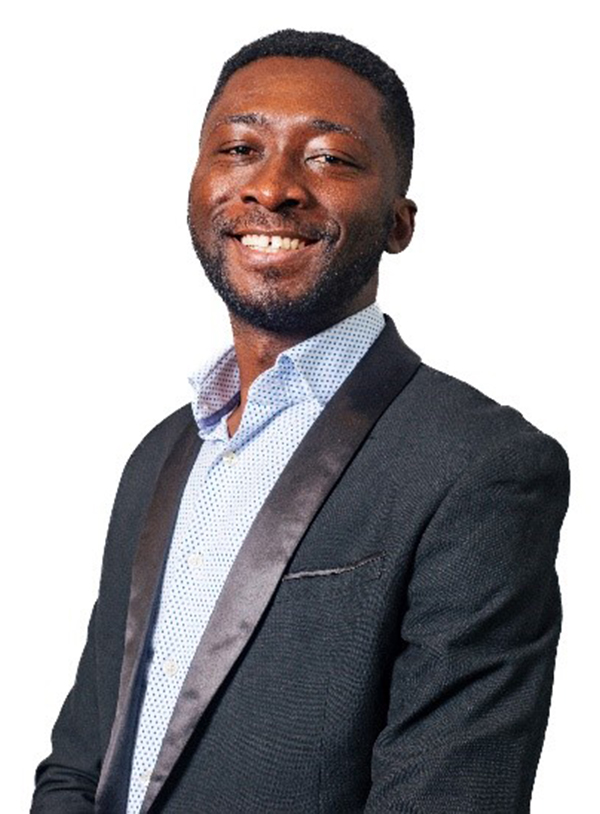News Archive
Written by Emmanuel Matey Mate-Kole, Georgia Institute of Technology
Edited by Johnson Aina, HPS Student Support Committee
 The Student Support Committee is proud to showcase another outstanding health physics graduate student, Emmanuel Matey Mate-Kole, who is a nuclear and radiological engineering PhD candidate in the Nuclear and Radiological Engineering and Medical Physics (NRE/MP) Program, George W. Woodruff School of Mechanical Engineering at the Georgia Institute of Technology (Georgia Tech). We hope you get to know Emmanuel through learning about his background, experiences, and current PhD research work.
The Student Support Committee is proud to showcase another outstanding health physics graduate student, Emmanuel Matey Mate-Kole, who is a nuclear and radiological engineering PhD candidate in the Nuclear and Radiological Engineering and Medical Physics (NRE/MP) Program, George W. Woodruff School of Mechanical Engineering at the Georgia Institute of Technology (Georgia Tech). We hope you get to know Emmanuel through learning about his background, experiences, and current PhD research work.
Emmanuel is currently a third-year PhD candidate working under the supervision of Dr. Shaheen Dewji in the Radiological Engineering, Detection, and Dosimetry Laboratory (RED²). Achieving candidacy status involved a two-stage process for Emmanuel: passing his PhD qualification examination at the end of the first year at Georgia Tech and successfully defending his PhD proposal during the third year. In addition to his primary PhD track, Emmanuel chose to maximize his utilization of course resources from other departments at Georgia Tech, culminating in a minor in computational mathematics and statistics. His current research encompasses "Evaluation of Exposure Pathway, Internalized Uptakes, and Dosimetry for Defense and Consequence Management Applications" and "Enhancement of Biokinetics Using Physiologically Based Models for Internalized Radionuclides." Specifically, his research involves a novel stochastic expansion of biokinetic models for dose assessment and the development of radiation countermeasures for internalized radiation exposures during mass population exposure events and military scenarios. Essentially, his research directly supports US national security efforts in preparedness for malicious events such as nuclear attacks, radiological incidents, and chemical accidents, providing crucial assistance to agencies such as the Department of Defense, Department of Energy, National Nuclear Security Administration, Department of Homeland Security, and National Institutes of Health. His experiences in internal dosimetry with expertise in biokinetic modeling seamlessly align with pharmacokinetic modeling for pharmaceuticals.
Emmanuel graduated from Kwame Nkrumah University of Science and Technology (KNUST), Kumasi-Ghana with a BSc in physics (with a biomedical physics emphasis). After completing his undergraduate studies, he served as a teaching and research assistant in the physics department for one year. During this period, he provided assistance in undergraduate-level courses, including but not limited to, health physics (including nuclear energy), atomic physics, statistical mechanics, electromagnetic theory, medical physics, and radiobiology. Additionally, he supervised general physics laboratory work and managed research projects in nuclear and biomedical laboratory physics.
Prior to attending Georgia Tech, Emmanuel earned a master's degree in nuclear engineering with a major in nuclear reactor physics and engineering at the Université Paris-Saclay in France. Throughout his master's program, he was a recipient of the prestigious and competitive Université Paris-Saclay International Master's Scholarship. During the first year of his master's program, he embarked on a research internship at Ire`ne-Joliot Curie Laboratory of Physics of Two Infinities (IJCLAB) – Health Unit, Paris-Saclay. His research focused on the characterization of 3D microdosimeters and the development of a graphical user interface using Python for application in hadron therapy. The analysis toolkit developed during this internship continues to be utilized by the laboratory to date. Emmanuel also interned as a research engineer at the French Alternative Energies and Atomic Energy Commission (CEA) in Paris-Saclay, France, within the Reactor Studies and Applied Mathematics unit (SERMA) and under the Laboratory of Stochastic & Deterministic Transport (LTSD) division. His research work at the CEA focused on the Study of Doubly Angular and Energy Differential Gamma-Ray Albedo Library for Gamma Dose Rate Calculation, involving the TRIPOLI-4 Monte Carlo Code and the NARMER-1 code, which ultimately formed his master's thesis.
Currently, Emmanuel is an active member of the Health Physics Society (HPS), Radiation Research Society, American Nuclear Society, and World Institute for Nuclear Security, demonstrating his active commitment for professional engagement. He has played a pivotal role in the success of the HPS conferences since 2022. His contributions include serving as a graduate student worker during the 67th HPS Annual Meeting, as well as having the honor of being invited as a session chair of the HPS Hybrid Internal Dosimetry Workshop at Oregon State University in 2023. He was also the recipient of the HPS J. Newell Stannard Fellowship in the 2022/2023 academic year—a recognition of his academic achievements, outstanding scientific contributions, and professional dedication in the field of health physics as a graduate student. Emmanuel has delivered technical presentations nationally and internationally, including a number of invitations to serve as a course instructor in internal dosimetry, biokinetic modeling, radiation dosimetry, and basis of computer programming (C++ and Python) as applied to radiation transport and dosimetry. Recently, he was invited to join the leadership of the Council on Ionizing Radiation Measurement and Standards (CIRMS), where he volunteered to support the Radiation Protection and Homeland Security Subcommittee.
Emmanuel anticipates graduating in summer 2025 and aims to secure a research appointment at a national laboratory. He is a talented investigator and an advocate for harnessing the power of computational science for transformative change. His expertise extends to the application of machine learning techniques, bringing data-driven precision to radiation dosimetry and monitoring domains.




